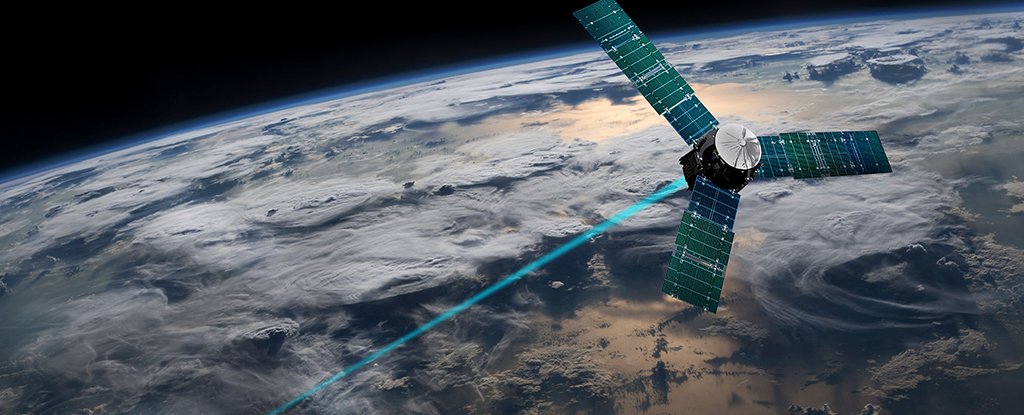
For artists and romantics, the twinkling of stars is visual poetry; a dance of distant light as it twists and curves through a turbulent ocean of air above our heads.
Not everyone is so enamored of the disturbances in our atmosphere. For many scientists and engineers, a lot of research and ground-to-satellite communications would be a lot easier if the sky just wasn’t there.
Losing our planet’s protective gas bubble is not exactly a popular option. But Australian and French researchers have teamed up to design the next best thing: a system that directs light through the stormy currents of rippling air with the movement of a mirror.
The result is a laser link that can survive through the atmosphere with unprecedented stability.
While astronomers have a few tricks up their sleeve to correct the distortions of the atmosphere in incoming light, sending a coherent beam of photons from the ground to a distant receiver was a challenge .
By keeping transmissions on target and coherent – with their phases neatly aligned – through hundreds of miles of moving air, we would be able to link highly accurate measuring instruments and communication systems.
Satellites can search for ores or evaluate groundwater levels with improved precision. High-speed data transmission may require less power and may contain more information.
Lead author Ben Dix-Matthews, an electrical engineer at the International Center for Radio Astronomy Research in Australia, explained the technology to ScienceAlert.
“The active terminal essentially uses a small, four-pixel camera that measures the lateral movement of the received beam,” says Dix-Matthews.
“This position measurement is then used to actively control a steerable mirror that keeps the received beam centered and removes the lateral movement caused by the atmosphere.”
In fact, the system can be used to compensate for the warping effects of the moving air in three dimensions – not just up and down, or left and right, but along the trajectory of the beam, keeping the connection centered and phases in order .
So far it has only been tested over a relatively short distance of 265 meters (about 870 feet). About 715 meters (just under half a mile) of fiber optic cable was laid underground between the transmitter and receiver to carry a beam for comparison.
The results were so stable that they could be used to connect the types of optical atomic clocks used to test basic physics, such as Einstein’s theories of relativity.
Now that the proof of concept has been demonstrated, there is no reason to think that a similar technique will one day not aim for the sky and beyond. However, there are a few hurdles that must be overcome first.
“During this experiment, we had to do the initial alignment by hand, using a visible guide laser aligned with the stabilized infrared beam,” Dix-Matthews told ScienceAlert.
“When making connections between optical atomic clocks, it would be good to have a way to make this rough alignment easier.”
Fortunately, Dix-Matthews’ French employees are working on a device that will speed up the initial rough alignment process, promising a second-generation laser link technology that doesn’t require such a complicated setup.
The team also found that temperature variations in the equipment affected the stability of the phase, limiting the signal duration to about 100 seconds. This hurdle will also be the focus of future improvements.
We may not have to wait long. The researchers are already making progress with upgrades to their system.
“We’ve started using a powerful laser amplifier that should help us deal with the greater power losses expected over longer distances, for example to space,” said Dix-Matthews.
“We’ve also completely rebuilt our active terminal to make it more sensitive to low received powers and to make it more effective at canceling the motion of the received beam.”
With orbit technology rapidly becoming a major concern for many data providers, potentially filling our skies with satellites, innovations that allow linking communication systems through our atmosphere will only become more sought after.
As useful as our atmosphere is in keeping us all alive, there are certainly some drawbacks to being buried under a restless blanket of warm gas.
This research is published in Nature Communications.